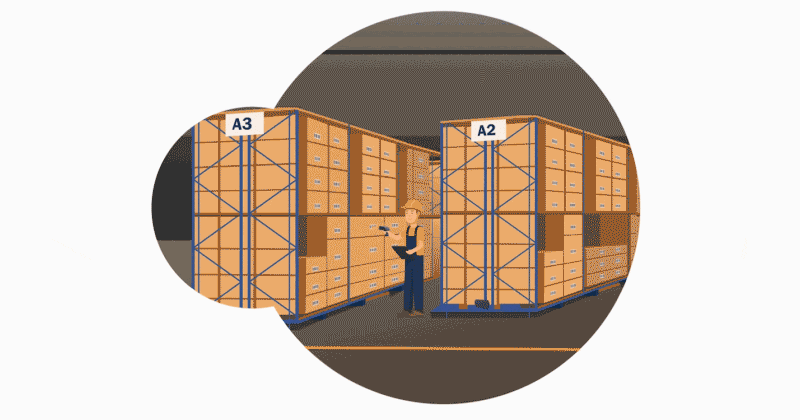Becoming an industry leader takes a lot more than building strategies and plans—it requires you to execute processes very well. Sure, a Business Process Management (BPM) solution can help enhance your overall business performance through visibility, but is that enough? What can a BPM solution do on top of giving you visibility and understanding to improve your business processes continuously?
When customers are looking to implement Business Process Management (BPM) with our RapidValue BPM Suite, they often ask me what level of support we, at To-Increase, provide beyond BPM documentation within Microsoft Dynamics 365 Finance and Supply Chain Management (D365 FSCM).
Before I can answer this question, it’s important I help you understand the following fundamental questions, which I will be covering in this blog:
1. What are the key areas in BPM implementation?
2. What do you gain from business process management?
3. What are the key benefits of business process management?
Once these BPM questions are clear, you will understand the criticality of having a comprehensive BPM solution such as RapidValue BPM Suite. It will help you deliver true value in the key areas across your business systems, beyond just Microsoft Dynamics 365 Finance & Supply Chain Management.
Key areas of BPM
Too often, we think of business process management as a simple act of documenting processes. That is far from the truth—BPM consists of several different key steps.
Here are the key areas of a BPM solution:
1. Direction
In our software solution, RapidValue, everything starts with goals. We believe it’s unlikely for processes without direction to reach a goal or a key value.
Of course, goals are company-specific. At this point, when building up your goals, there are no systems that are connected to specific goals. Goals are linked to activities within the processes, which in turn, are connected to achieving certain goals.
2. Execution
Execution is the second most critical area in our application. Here, we define the organizational structure, which is needed to execute the activities that must be performed to reach the goals.
In this structure breakdown, you will find all the different players that will perform the processes that go into full execution. The applications become visible from this step. The organizational structure will be tied directly to all the roles and users that are configured within Microsoft Dynamics 365.
However, if the users are not in Microsoft Dynamics 365 but are in other applications, they can also be listed here in the organizational structure and be leveraged throughout the processes, which are defined later.
The advantage for the users within Microsoft Dynamics 365 is that they will be able to validate the application logic and application security against the roles defined in their business processes, and the same capabilities will not be available for users outside of Microsoft Dynamics 365. However, this does not stop the documentation of the entire organizational structure—it can still be documented and measured in RapidValue.
3. Roadmaps
The way we see this step is a breakdown of the operational areas of processes within an organization. This provides you with a visual process map that clearly defines the high-value areas, and departments that need to execute activities and processes to reach the specified goals.
Once again, the mapping of key areas of processes within the organization is not related to any specific application. Applications are connected and defined further down in the business process management area within business process flow activities under each of the main areas for your organization.
4. Analysis
In this area, a BPM solution covers the documentation of a future scenario, after changes are made in the existing processes.
Within our RapidValue application, you can create multiple versions of both your business and approval processes. It, thus, helps you define the future state to improve and reach the best benefits for your business.
5. Connecting business processes to applications
This is a critical area of BPM, which is not discussed a lot. It helps you empower the users in your organization to execute the processes and achieve their respective goals. This is where RapidValue, within Microsoft Dynamics 365, gains its advantage.
Because RapidValue is built inside Microsoft Dynamics 365, it can understand how to execute each activity inside the business process flows through the application to enable the users to reach their goals. As it is a known application, the process definition can be done simply through a task recorder where all activities are recorded for the users. These activities can also be leveraged in the learning module to train and teach either new or existing customers how to perform new processes they are not familiar with.
Having all the goals, roles, process models, etc., built within RapidValue allows the users to test for security and to assure complete alignment with the application. That is exactly where our customers have the question, “But how about other applications that are not Microsoft Dynamics 365?”.
For those applications that are not part of Microsoft Dynamics 365, the process mapping in the activity definition still applies just the same. Individual activity lines can be connected and linked to other applications so that users visualizing the process can click and go directly to those apps. Therefore, the total documentation of an entire business process from beginning to end, no matter which app, is performed within RapidValue.
The only difference for applications outside RapidValue is that the user will not have the ability to use a task recorder to record their flows or be able to execute tests against security in those applications.
Gains expected from BPM
Okay, so you have implemented a full BPM solution. Now, your next question would be, “When can I see the gains?”.
We see that the return on investment for leveraging a solution such as RapidValue can be expected within 20 to 25 weeks, yielding a profit of 20% FTE savings. To achieve this level of ROI, the organization must truly invest in setting up its strategy, organizational structure, as well as processes to ensure activities are streamlined and lead to great results.
Here are 3 ways your BPM can ensure productivity gains.
Another area where we see a large amount of return is on user adoption. We have seen from previous studies where only about 20% of business applications are actually used by the end-users. Users who are leveraging the full documentation of processes and the learning system can benefit a lot more from the application. This, in turn, will assure a better return on investment.
It does not matter if the application is within Microsoft Dynamics 365 or any other platform. Having complete documentation of the business processes can enable you to teach and help your users better leverage any app. Our focus is to be able to deliver end-to-end business process management, allowing organizations to drive their entire business forward through RapidValue.
Benefits of BPM
The benefits of business process management are numerous, and I’d like to highlight the top 4 below:
Efficiency and reduced risks
One of the key benefits of business process management is the alignment of processes with business goals. In our case, it does not matter where the business process will be executed, but what does matter is how the process will achieve the goals.
RapidValue helps you increase the efficiency of your staff through complete visibility into activities. You can monitor the activities assigned to your personnel, how they perform these activities, and how they achieve the goals for your organization. As a result, you will be reducing any risk of misconduct or fraud.
Of course, many ISO certifications come with requirements, but they can be fulfilled through RapidValue as well.
Compliance and transparency
With this benefit, again, you will be able to have complete documentation of all your processes and related activities, irrespective of the application. This will allow for different kinds of compliances, including SOX and ISO standards.
Having process flows connected directly to the organizational structure will help in executing and reaching your goals. Furthermore, it creates an unparalleled level of clarity and transparency in the organization. Therefore, within RapidValue, you’re able to entirely create both compliance and transparency in your business across many different applications.
Consistency, repeatability, and transferability
RapidValue documents your goals, organizational structure, business process areas, and activity inflows completely. Therefore, you do not have to waste time setting up the entire process again. You can consistently and repeatedly work towards your organization’s goals.
Again, it is not restricted to any application(s). You can leverage this information to ensure not only the implementation of your apps but also rollouts and consistency in the usage of the application for decades to come.
In terms of transferability, we have many clients who create a blueprint for their business and then transfer those processes across many application rollouts to several organizations and countries.
Therefore, with RapidValue, you’re able to achieve better consistency, repeatability, and transferability.
Integration of technologies
Achieving the integration of different technologies is absolutely a key component of value and benefits from RapidValue.
And here, let me go back to the main customer question (mentioned at the beginning of this blog):
Can RapidValue integrate with other solutions besides Microsoft Dynamics 365?
Having technology integrated into a BPM solution allows for quick and easy access to the activities that need to be performed to complete the flows. It also allows the users to learn and improve their usage of the applications. RapidValue supports any application, including Microsoft Dynamics 365, to be integrated into the business processes, where process maps can be linked to these applications.
Of course, with Microsoft Dynamics 365, RapidValue offers a deeper level of integration, where you get further security checks, test scripts, and automated process creation. It also includes many other functions, such as our e-learning component, allowing users to fully utilize the Microsoft Dynamics 365 application.
Some of these functionalities can also be used with other applications outside Microsoft Dynamics 365 that are not as deeply integrated. However, we have found that linking processes within RapidValue to many different applications is vital for the usage of the application.
In short, while RapidValue delivers several benefits to Microsoft Dynamics 365, it is also able to connect and document different business applications. RapidValue can connect business process flows to these applications, allowing seamless integration with flows independent of the applications needed to achieve the company’s goals.





